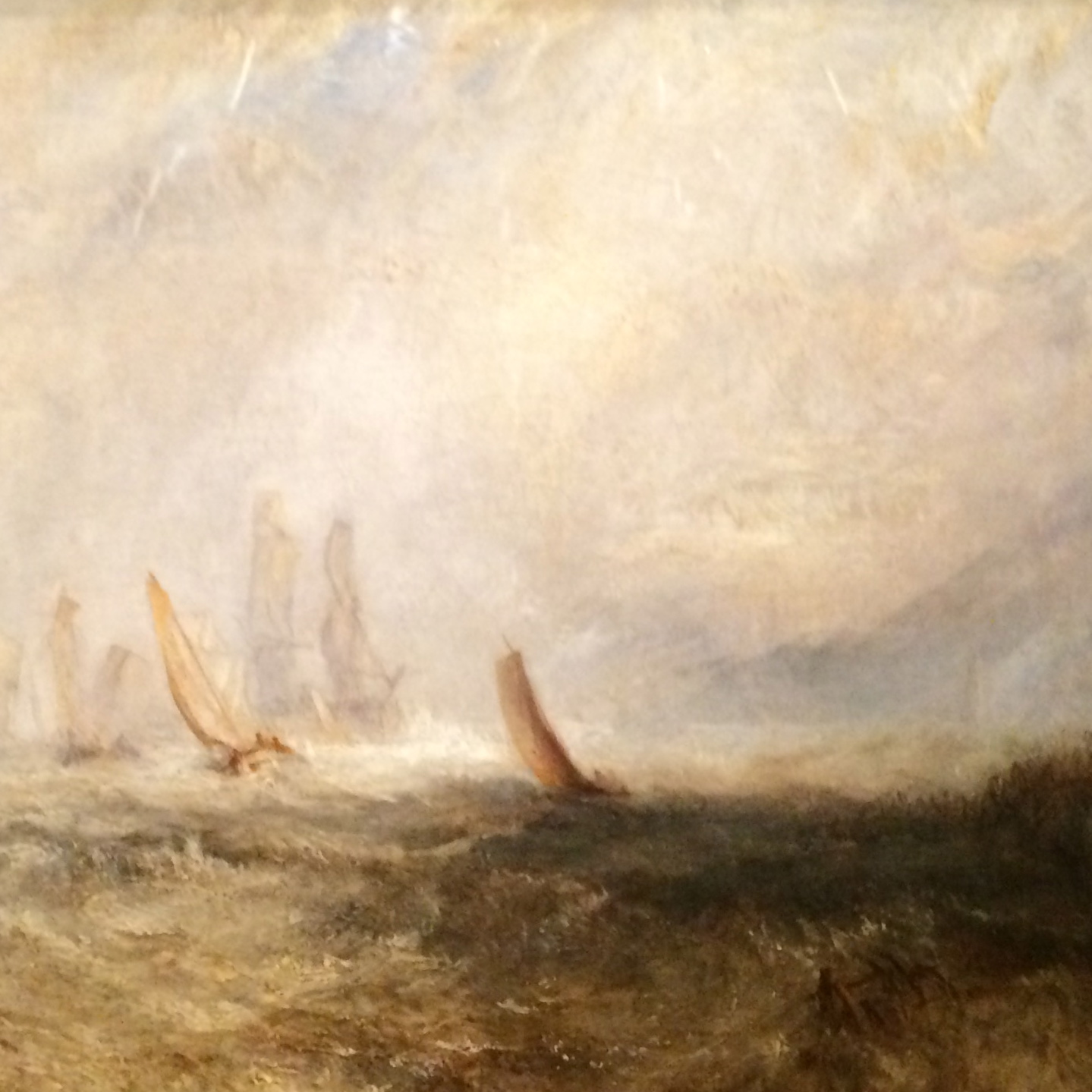"Every glance is a glance for study, contemplating and defining qualities and causes, effects and incidents, and develops by practice the possibility of attaining what appears mysterious upon principle." - JMW Turner, 1809
James Mallord William Turner (1775 - 1851) was one of the greatest and most controversial painters of the Romantic era. He was born in 1775 London during the Industrial Revolution and the dawn of the French Revolution. As a landscape pioneer, Turner overshadowed the British landscape painting during the first half of the 19th century - a period of great change not just socially, politically and technologically but also culturally and artistically. Renowned for his oil paintings, watercolors, engravings and book illustrations, he would inspire generations to come.
Turner's success was immediate. Upon his father's encouragement to pursue his talents, he entered the Royal Academy of Arts in 1789 at the age of 14. In 1796 he exhibited his first oil painting from where his career took off. In 1802 he was elected to full academician status. Two years later he opened his own picture gallery to showcase his work; and in 1822 a second. His many admirers and collectors - among them a new generation of rich, private patrons - embraced his works not only for their audacity in form and style but also for their celebration of nature and choice of contemporary subject matter.
Turner was a passionate itinerant throughout his life. Prosperous by 1800, he was able to travel freely and independently. The outbreak of the war with France in 1793 made traveling through Europe unsafe, so Turner limited his voyages to Britain. En route he would always take notes and make pencil studies in a pocket-sized sketchbook; these visual records would serve him as aides-mémoires for his oil paintings and watercolors back at his studio. Academically trained, he did not paint from motif in oil nor watercolor en plein-air. Instead he focused on training his visual memory in such a way that color sketches deemed unnecessary to him.
The Peace of Amiens in 1802, allowed him to travel abroad. His first tour took him to Paris and Switzerland and proved to be extremely inspirational. First, it reenforced his endless fascination with the sea in relations to the sky. Second, the Musée de Louvre offered him a unique chance to study the old masters - Claude Lorrain, Nicholas Poussin, Salomon Ruysdael in particular. It also sparked in him the idea of opening his own gallery. Third, the Swiss alps with their heroic grandeur left an enduring impact on his conception of landscape painting.
The Dogano, San Giorgio, Citalla, from the Steps of the Europa
Oil on canvas; exhibited 1842
Snow Storm
Steam Boat off a Harbour's Mouth making Signals in Shallow Water and going by the Lead. The Author was in this Storm on the Night the Arile left Harwich
Oil on canvas: exhibited 1842
1803 marked the beginning of the Napoleonic wars and it was not until 1817 that Turner was able to pursue his continental travels. In 1819 he made his first trip to Italy, where he fell in love with the mediterranean (sun) light in general and Venice in particular. For the next few decades his continental travels would take him to Luxembourg, Belgium, The Netherlands, Germany and Austria; he would return to France, Italy and Switzerland several times. After his final tour to France and a long, creative life, Turner’s health began to deteriorate in 1845. He died in 1851; he was 76.
JMW Turner left behind a unrivaled volume of breath-taking works in regards to not only an immense diversity of subject matter but also a dazzling evolution of technique - a sixty year transition from topographically exact renderings to creations of visual audacity. It is a prolific outpour of his creative genius and limitless imagination - 540 oil paintings, 1,600 watercolors, 150 literary vignettes, and 19,300 sketches.
Turner's Bedroom in the Palazzo Giustinian (The Hotel Europe), Venice; Watercolor and gouache on paper
ca. 1840
One of Turner's biggest legacies is how he accomplished to dislodge history painting from its privileged, highest rank within the academic genre hierarchy by challenging long-held beliefs such as landscape painting should solely be regarded as a record of a given location. By producing highly creative responses to contemporary life and showing how strong of a potential for imagination in both execution and contemplation landscape painting was capable to possess and evoke, he elevated this low genre to new heights. He was endlessly fascinated by the authenticity of a personal experience, the vulnerability of men vs elements and by nature's force.
Most importantly, Turner's oeuvre is a visual testimony of his fascination with atmosphere, light and color - he rendered atmospheric perspective in such a fluid and breathtaking. It is also a testimony to his compulsive exploration to break down conventional forms of representation while relentlessly searching for a new language of stylistic application. His water colors are superb and stand in a fascinating contrast to his oil paintings: they have an abstract, if not modern feel about them. Late in his work, both techniques - watercolor and oil painting - seemed to converge. Light effects were the primary focus with some details almost indiscernible.
By retracing Turner’s supreme artistic technique over the picture plane - the painterly yet rough brushwork, the vibrant colors, the magical rending of the atmosphere - the canvas suddenly becomes alive. It is no longer a glossy, smooth surface, nor merely a structured window to on the world with a moral message trying to appeal to our intellect and reason. His luminous works try to reach us on an emotional level - much in the spirit of the romantic era. With their seemingly out-of-balance, fluid compositions they pull us right in and this with an invitation to experience Turner’s persona coming through, his emotions, his thoughts, his personal experience.
By appealing to our senses with a turbulence of big waves, dark clouds, heavy rain, gleaming sun rays, blazing flames, Turner’s creations cannot but evoke intense feelings such awe, drama, terror, horror, suffering and grief. And in this moment - when our gaze is turned to the surface of the painting - we happen to witness the truest form of the aesthetic and artistic intend: the manifestation of the creative journey, the thoughts and emotions involved - through which personal experience turns into art.
Norham Castle, Sunrise
Water on paper; ca 1845 (?)
What his critics decried as shockingly radical - the dazzling, sometime expressive use of color, the atmospheric light effects, the indistinct if not abstract blotches of shapes, the thick sensual paint application, the contemporary subject matter and the non-representational tendencies - are now seen as heralds of modernism.
JMW Turner: Painting Set Free is a feast for the eyes! Through September 20th, 2015.
Check out de Young.
Learn more about Turner, visit The Tate.
Resources:
Sam Smiles, JMW Turner, Tate Publishings, 2000
Approach to Venice
Oil on canvas; exhibited 1844
Peace - Burial at Sea (detail)
Oil on canvas; exhibited 1842
Shipping Boats Bringing a Disabled Ship into Port Ruisdael (detail)
Oil on canvas; exhibited 1844
The Blue Rigi
Water on Paper; 1842








